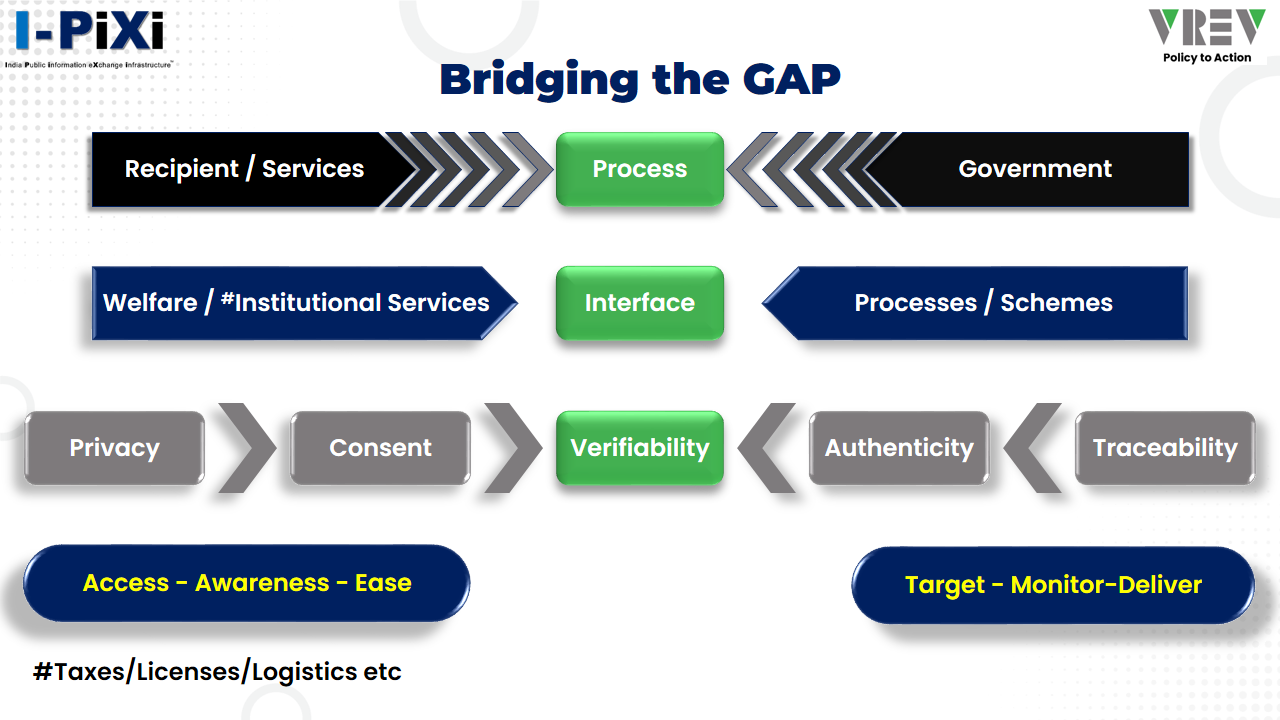Bridging the Governance gap: The key to India's Transformation
India is a nation of 1.5 Billion, and its capability to move welfare and institutional dealings with government at the ease and fidelity required for every transaction will establish our transition to a developed country.
This requires a Digital highway – built – owned – operated – by our talent. Backed by an innovation ecosystem that supports the transition of Government-Citizen interaction processes in all domains – Welfare – health -education-logistics-taxes-compliance submissions etc.
An open innovation ecosystem that is anticipatory and experiments with and establishes benchmarks in Technology, Applications and the Legal framework is a critical need. We cannot establish the large-scale transition without a concentrated and engaged Indian talent, that is at the cutting edge of open-systems expertise in User Centric Design, Policy Frameworks, Law and Technology/ Application Architecture.
Easing the reciprocal mechanism of interaction between Government and Citizen – has to ensure that both parties have better capabilities at their disposal. For Citizens it is about easing interfaces, better GUI, Guardianship (for those who struggle with digital devices), expanding access for marginal communities and individuals, while for the government a dynamic reporting and response capability. Friendlier interfaces and exception handling itself would be a good beginning since UI design gets a low priority in most applications.
More fundamentally, the framework that allows digital data of all participating agents (people or organisations) to flow, ensuring consent, privacy, non-tamperability and verifiability will be the core for a new mediation of governance at scale across all domains.
23m poor households, high expectations, Scale – Bridging the GAP
The blockchain is not about the ledger – all information systems are ledgers tracking transactions. The Blockchain is an infrastructure that provides mobility of Digital data in an open environment – for all applications – by consent, respecting privacy for the SENDER / OWNER, ensuring data authenticity for the RECEIVER / RESPONDER and ensuring the VERIFIABILITY of the Process, seamlessly.
Creating domain specific applications, is predicated on the availability of a blockchain at population transaction scale, and requires translating the Digital to Social Architecture.
This translation requires nuance – Technical architecture as distinct from social design – a perverse interpretation of which is in the cryptocurrency space. Example – we need to interpret centralization and decentralization in the technical space as distinct from the social realization of the same. The current maturity, and being only thinly facetious, seems to interpret time as decentralized since people own their timekeeping device!
An Ecosystem of innovation is required to architect Applications, integrate devices, automate governance processes around W3 principles over a blockchain infrastructure that can move data globally but reside legally under an Indian jurisdiction.
This will require the definition of the Authorizing environment for participating entities – Persons (AADHAAR, PAN, Degree Certificates, DLetc.,), Organizations (ROC, CIN, GST etc.,) and the felicity conditions (enabling environment) related to legal rules of Privacy, Consent, Shared data use / storage, transaction procedures and Exceptions).
All white collar frauds are without exception frauds of calculated misrepresentation, add to this collusive fraud and the common place rent-seeking delays in services – we will be soon faced with the urgency to move to a open digitalized ecosystem where all participating agents and their data / work can be authentically verified and tracked. The transparency that ensues will work to deliver benefits, whether it is PMAY, Education, ABDM or multimodal Logistics.
The idea of an “India” blockchain and an India based ecosystem of “Digital Commons” is necessary as the geopolitical significance of the weaponization of digital/material chains are country specific risks.
At the scale of billions of transactions per day, with 1.5 billion human agents alone, not even counting a vast array of organizations (agency) across a diverse portfolio of services – the need is for an India blockchain and research that delivers. We are the leaders!

